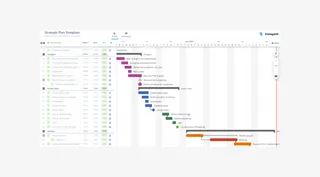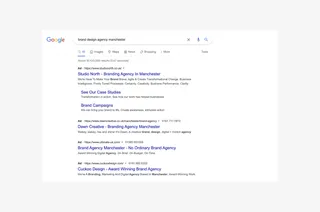How to Start Your Own Branding Agency


In a world where businesses find more ways to compete against each other every day and consumers constantly raise the stakes, branding will always be in demand. Forbes estimates the marketing industry to be worth over $1.7 trillion currently. If you want a slice of that pie, read on. This article will cover what you need to know about starting your own branding agency.
Currently, there are over 7,000 digital advertising agencies in the UK. To ensure you differentiate from the rest of the noise in the branding world, you must start with strong foundations. Read about what a branding agency is in our blog.
The first thing you need to do when starting any business is register it with Company’s House. As a private business, your company earnings must be declared to HMRC at the end of every tax year, even if you don’t make any profit at all. This is so the government can keep track of who needs to pay tax and how much. You could receive a fine if you don’t submit a tax return in April.
Money Helper offers a good guide to completing your self-assessment for your tax return and details what information you need to provide.
It’s easy to register a new business online, and it only costs £12.
At this point, you should also arrange a means of accounting to keep track of your cash flow. Doing this at the beginning of your journey to starting a business will enable you to track all incoming and outgoing money, no matter how small the transactions. This is all information you will need when you submit your tax return, so you can save yourself a lot of hassle by making arrangements now.
There are a few good tools small businesses use for accounting. The main two are QuickBooks and Xero. Here’s a comparison:
QuickBooks | Xero | |
Pros |
|
|
Cons |
|
|
This is also a good time to consider financial and legal support for your business. Will you instruct a solicitor or accountant to help you with your finances and legal aspects or will you handle these yourself?
You will need a robust business plan if you expect your agency to become a reality. Find out how to write a business plan on the government website. There are lots of resources and templates to help you.
Of course, every business is different (yours should be if you expect to differentiate from your competitors), so your business plan will be too. Here’s a template for the essential details a business plan should include
A description of the business. This should be brief, similar to an elevator pitch. Include your USP here to capture the attention of the person reading.
Detail what you offer. If you work in a branding niche, specify that here. Describe the type of branding you offer and how it’s unique from other agencies.
Your market analysis and positioning. Conduct a SWOT analysis to help you determine the strengths and weaknesses of your business and how you measure up to your competitors. Explain the current market landscape and how your business fits into it.
Your business strategy. This will likely be the most in-depth section of your business plan. You should detail how you plan to penetrate the market. Who will you target, and how will you market your services. What will your customer service experience be like? What will your milestones be? When and how much profit do you plan to make? Use a Gantt chart to show your strategy. See an example of a Gantt chart below.
Your background. Treat this part like a CV or personal statement. Include any credentials that are relevant and prove that you are capable of running the agency.
Cash flow forecast. See the next section for more details on this.
Executive summary. Finish with a brief conclusion, touch on all the key aspects of your business, reiterate your USP, and finish on an exciting note.

Image source: instantgantt.com
You may want to apply for funding to get your business off the ground. As a branding agency, the most expensive assets you need to acquire will be computers and software, but you may also need a place to work, especially if you already have a team of staff.
You must prove to a lender that your business forecasts adequate profit to be approved for a loan. This is how the lender can be sure you’ll pay the loan back in a specified amount of time. You can do this with a cash flow forecast. Download a cash flow forecast template from British Business Bank. The cash flow forecast will show all our income and outgoings. Any money you invest in your business, your survival budget, and the income you need to make to break even and make a profit.
If you’ve created your business plan properly, you’ll be able to demonstrate how you know you’ll make profit enough to pay back your loan. This is essential because just showing your passion and enthusiasm isn’t enough to persuade a lender to invest in your business.
If you have an accountant, they will be able to help you create a cash flow forecast, or you could pay for an accountant to review it for you before approaching lenders. This will help you ensure it’s viable and correct.
As a branding agency, your website and portfolio will be the tools you use to capture leads and acquire clients. This is how you can demonstrate what you’re capable of.
Your own brand should set the standard for what clients can expect from you, so many sure it’s flawlessly presented on your website and social media accounts. Many agencies feel like they must build their own website, but hiring an agency to build yours isn’t bad and can help you move things along.
Your branding portfolio should impress with the branding work you’ve completed. Take care to show off the strongest details of each project visually, and write about how you approached it and what you accomplished. Get testimonials from your clients to show their appreciation for working with you. Include sources of branding inspiration and build out content in your blog.
Just because you’re running a branding agency doesn’t just mean images of your work are enough. Your blog and services pages should be carefully optimised with relevant keywords about branding to allow you to compete with other websites for the top positions on Google. SEO is essential for all businesses. When your potential clients search terms like ‘brand design agency manchester’ on Google, you want to be one of the first results they see and click on.

Now that you’re completely prepared to start branding, how do you find clients? This is often the most difficult stage of starting your business. The way you approach acquiring clients should be carefully set out in your business plan. Here are some ways to find your clients
SEO. We have already covered the importance of SEO to improve your website’s visibility. Organic SEO is a slow process, and it’ll be at least three months before you begin to see the effects of your work, longer if your website is completely new. You may want to learn about SEO yourself or hire an SEO agency to help you. This way you can free up a lot of your time to focus on other ways to attract clients. SEO can also include link building, and the more links on relevant websites that point to yours, the more qualified traffic will come to your website.
Networking. As the owner of the business, your clients will buy into the idea of you. Networking is a great way to build connections with other business owners and spread the word about your branding agency. Networking has an impact even if you’re not getting to know potential clients. Connecting with other agencies and people offering services that can help your business often opens doors to new audiences. Treat every professional introduction as a networking opportunity and build rapport in the market.
Collaborations. If your business is new and you need to get some work under your belt to show on your website, consider collaborating with another organisation. Paid or pro-bono, this gives you an opportunity to produce some work to show what you’re capable of.
There are so many ways to get potential clients interested in working with you, and no one route is the right one. The most important thing is to be open to opportunities all the time. Treating every interaction with positivity and confidence will increase your chances of getting businesses on board.
Understanding your client’s perspective is crucial when you run an agency of any kind. This will help you anticipate their hurdles, allow you to inform and guide them, and build an essential connection that helps your client to trust you.
Read our content on approaching a branding agency from a client’s perspective to better understand their challenges and what they look for in a good branding agency.
Hello, I'm Natasia, and I'm a content writer for Shape.